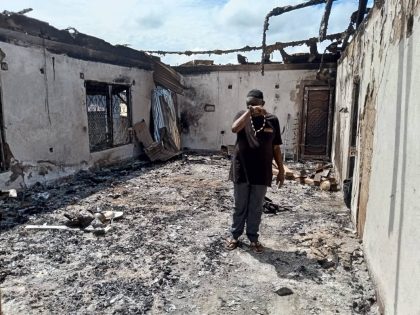Documenting Tuberculosis
In 2009, 1.7 million people died from TB globally, including 380,000 people living with HIV. The majority of deaths were in Africa.

Yale Rosen, via Flickr CC.
Last week, the Lens Blog of the New York Times featured a post about Misha Friedman, a photojournalist documenting the epidemic of tuberculosis in Eastern Europe & Central Asia. In 2009, 1.7 million people died from TB globally, including 380,000 people living with HIV. According to the World Health Organization, the majority of deaths were in Africa.
In Eastern Europe, there are now increasing rates of multidrug-resistant TB (MDR-TB). MDR-TB is extremely difficult to treat—it doesn’t respond to first-line drugs—and is often fatal. It spreads easily in places like Russia’s crowded and inhumane prisons.
Friedman raises delicate and difficult questions about the role of journalists in covering a health crisis, and in photographing the dying. As a former volunteer for Medicines Sans Frontiers (MSF), Friedman has experience in front of and behind the lens. An excerpt from the post:
“Most of the people you see here are dead,” Mr. Friedman said last week, looking through the photographs. “My images have not really helped them. Maybe they’ll help people in the future. Maybe they’ll help with fund-raising here and there. But to these particular people, they did not help.”
On his website, Friedman provides further detail about working in the region:
Though Ukraine, Russia and Central Asia are very different, they have one thing in common—people are not treated properly, and people are not aware that tuberculosis does not have to be so deadly … They spend months in prison-like clinics, where equipment is outdated and medical and nursing staff are just as poor as their patients. Many leave without finishing their treatment and many come back and back … In that part of the world, unemployment levels are high, most young people are left jobless and spend their time taking drugs, using same needles, having unprotected sex. Many end up HIV positive. But they do not die from developing AIDS, they die much quicker—from tuberculosis. Most of them do not even know they are sick, till it is too late.
For more of Friedman’s work, visit his website.
Despite pleas from public health advocates and local activists, the Russian government continues to take extraordinary measures to turn its back on people affected by TB and HIV, and to ignore the evidence of what works in treating the diseases. This past week, it also shut down a website for an NGO that works to provide people with critical health information.



















